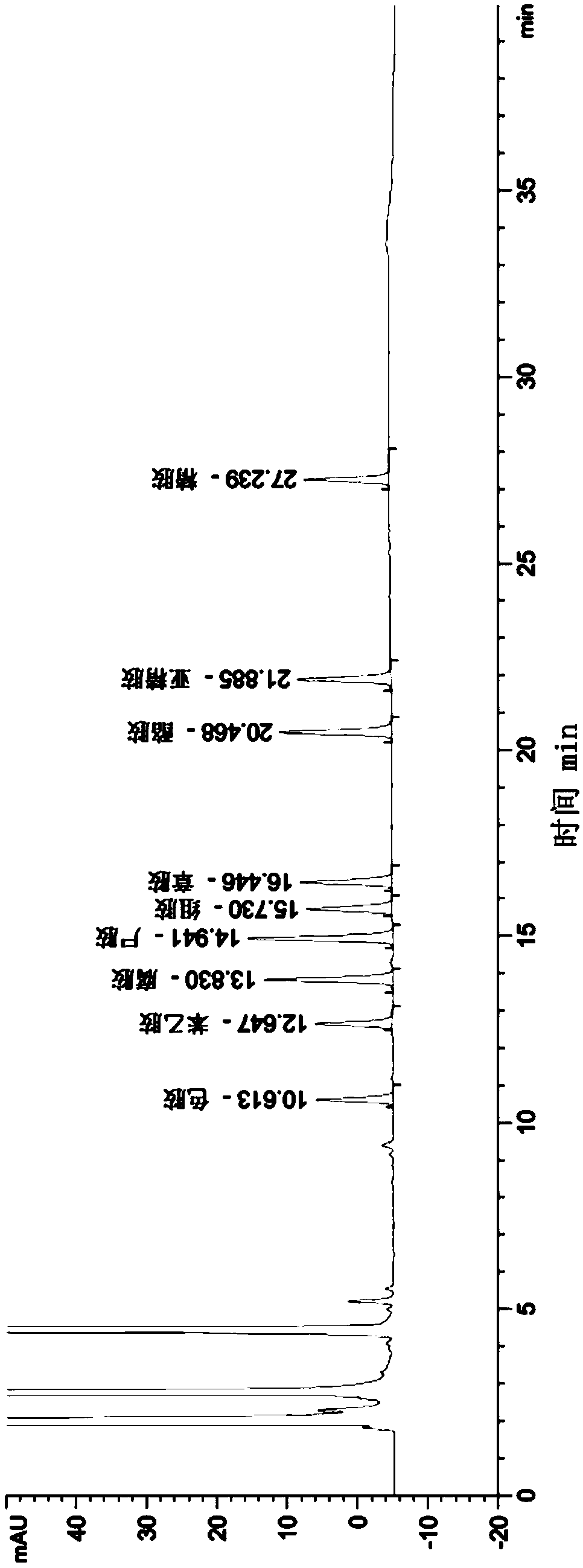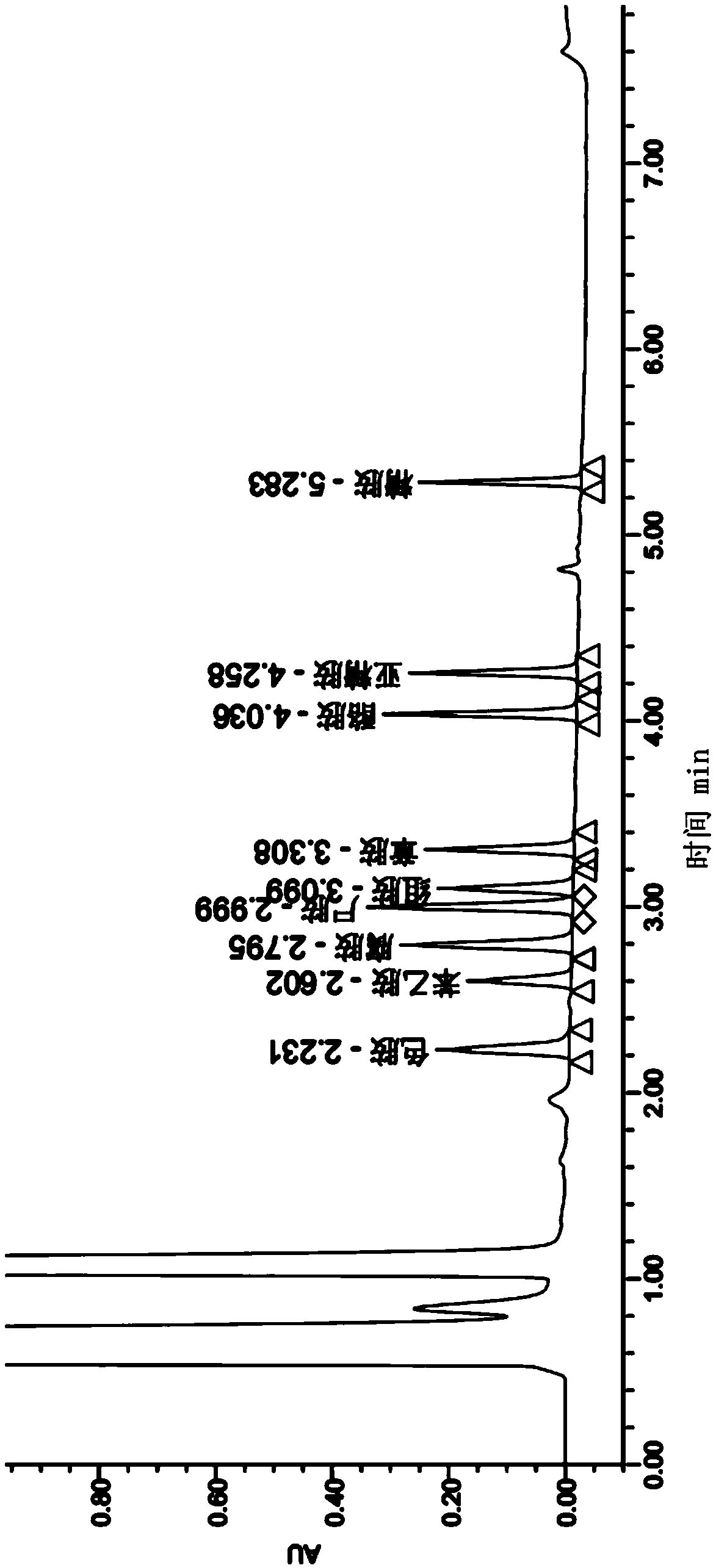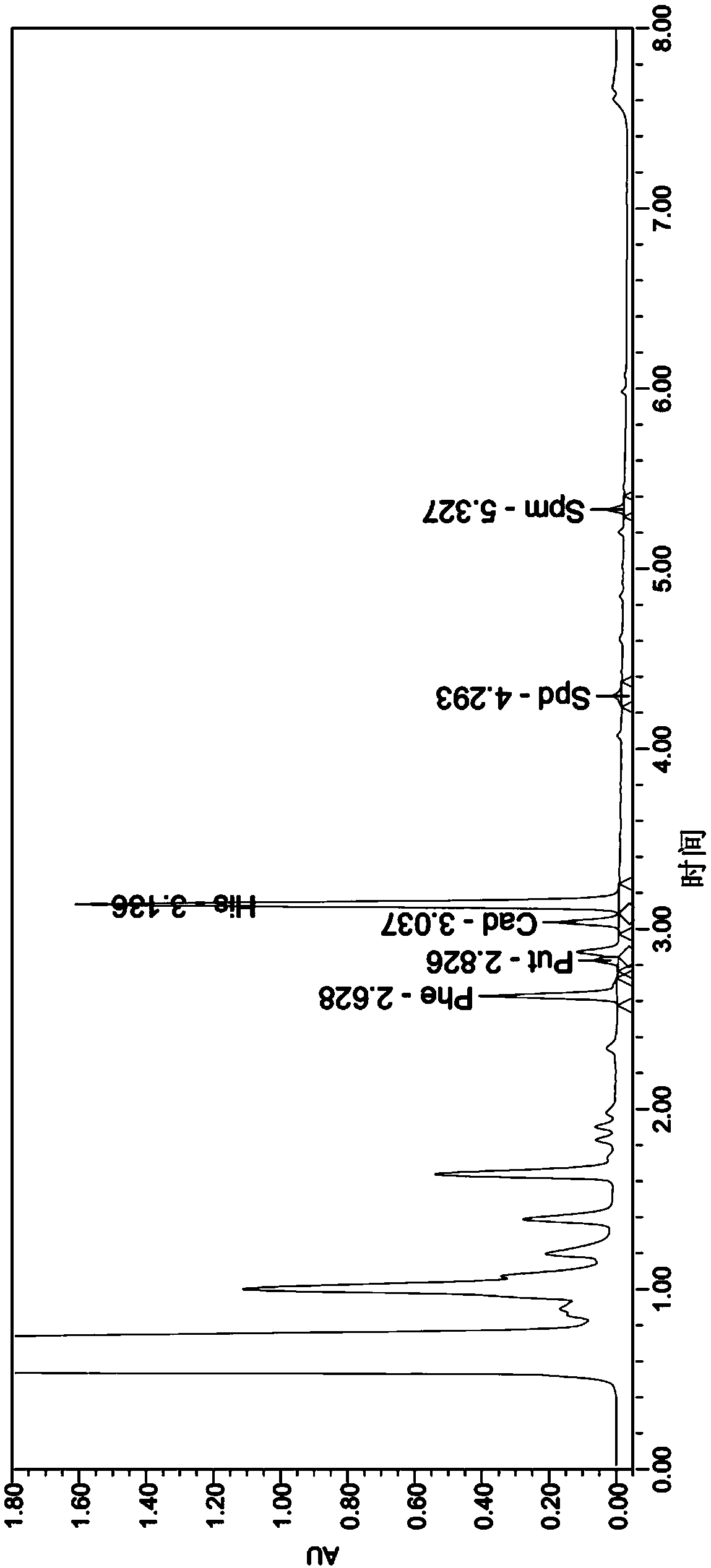Method for testing biogenic amine in kudzu vine root
A technology of biogenic amines and pueraria, applied in the field of detection, can solve the problems of harmful health of experimenters, cumbersome pretreatment, complicated treatment methods, etc., and achieves the effect of good reproducibility and simple method.
- Summary
- Abstract
- Description
- Claims
- Application Information
AI Technical Summary
Problems solved by technology
Method used
Image
Examples
Embodiment 1
[0062] The contrast of embodiment 1 chromatographic analysis method
[0063] In order to compare the LC separation performance, two systems were used for analysis in this study.
[0064] One is a Waters Acquity UPLC system (Waters, USA) including a binary solvent manager pump, a sample manager and a PDA (photodiode array) detector. Nine biogenic amines were separated by UPLC BEH C18 (1.7 μm, 2.1 mm×100 mm) (WATES, USA) column. The temperature of the UPLC column was set at 35°C. The mobile phase was pumped at a rate of 0.4 mL / min, and the gradient elution was shown in Table 1. Mobile phase A was 5 mmol / L ammonium acetate, and mobile phase B was acetonitrile. The injection volume was 5 μL, and nine biogenic amines were determined at a wavelength of 254 nm.
[0065] Table 1 Gradient elution program
[0066]
[0067] Another analytical system is an Agilent HPLC 1260 system (Agilent Corporation, USA), including a G1311C1260Quat pump VL, a G 13298 1260ALS autosampler and a G 13...
Embodiment 2
[0070] The selection of embodiment 2 chromatographic columns
[0071] On the basis of the UPLC parameters in Example 1, a comparative test was carried out on the chromatographic column, the difference being that: Acquity UPLC BEH C18 (1.7 μm, 2.1×100mm) column and Acquity UPLC BEH shielding RP18 (1.7 μm, 2.1×100mm) were studied )column. When Acquity UPLC BEH Shield RP18 column was used, the peak completion time of 9 biogenic amines was shorter than that of Acquity UPLC BEH C18 column, but cadaverine and histamine could not be completely separated. When using the Acquity UPLC BEH C18 column, the peak response values of the 9 biogenic amines were higher than the Acquity UPLC BEH Shield RP18 column. For this, a UPLCBEH C18 column was chosen.
Embodiment 3
[0072] The selection of embodiment 3 mobile phases
[0073] On the basis of the UPLC parameters of Example 1, a comparative test was carried out on the mobile phase, the difference being: compared acetonitrile-water (with Example 1), acetonitrile-10mmol / L ammonium acetate buffer solution (volume ratio 1:1) and methanol-water (volume ratio 1:1) are the three most widely used mobile phase systems. It was found that the chromatographic peaks of phenethylamine and putrescine, cadaverine and tyramine could not be completely separated when methanol-water was used as the mobile phase. When acetonitrile-water was used as the mobile phase, the retention time of cadaverine and histamine was not stable enough, and due to the drift of retention time, the two components could not be completely separated, which affected the accuracy of quantification. When the acetonitrile-ammonium acetate buffered saline mobile phase system is used, the target peaks have a good shape, symmetry, no tail ph...
PUM
| Property | Measurement | Unit |
|---|---|---|
| concentration | aaaaa | aaaaa |
| recovery rate | aaaaa | aaaaa |
Abstract
Description
Claims
Application Information
 Login to View More
Login to View More - R&D
- Intellectual Property
- Life Sciences
- Materials
- Tech Scout
- Unparalleled Data Quality
- Higher Quality Content
- 60% Fewer Hallucinations
Browse by: Latest US Patents, China's latest patents, Technical Efficacy Thesaurus, Application Domain, Technology Topic, Popular Technical Reports.
© 2025 PatSnap. All rights reserved.Legal|Privacy policy|Modern Slavery Act Transparency Statement|Sitemap|About US| Contact US: help@patsnap.com



